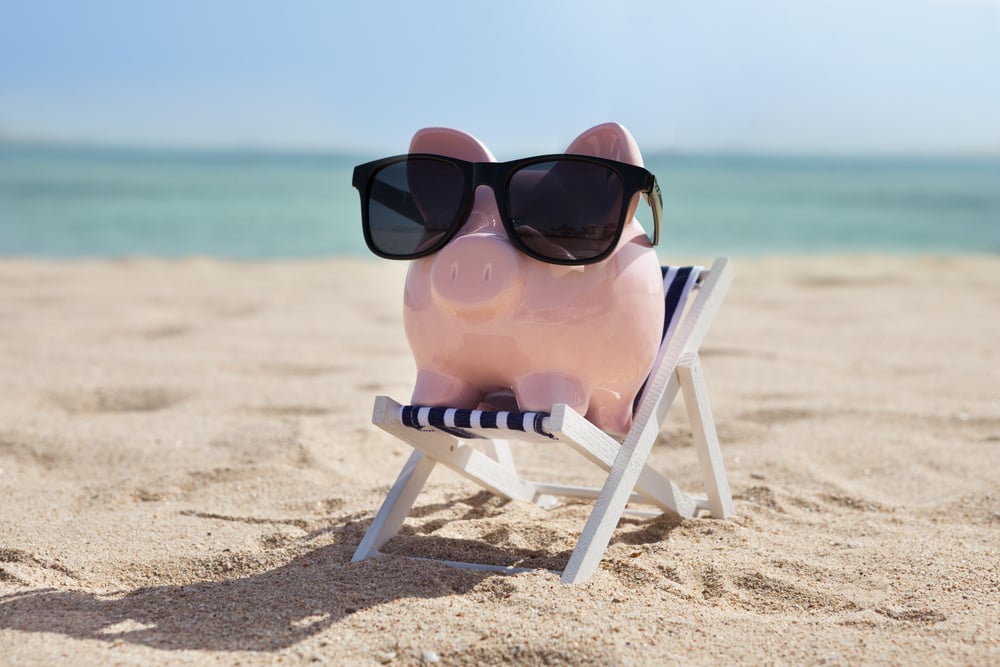Who said you can’t have it both ways? Well, when you’re a business owner and need to get away, if you can weave legitimate business activities into your trip that exceed the time you spend sipping Mai Tais on the beach, you can write off a good chunk of your expenses.
The trick to this is you have to adhere to IRS rules, keep a record of the business you conduct, and save receipts to verify your expenses.
Since there are some grey areas in what you can write off, figuring that out can at times be as much art as science. A trained tax pro can sort this out for you so you can maximize your travel write-offs.
We cover all this and more below, including suggested apps that make keeping a log of the actual work you do and expenses you incur easy.
Contents |
| IRS rules on traveling for business and pleasure |
| What expenses you’re allowed to deduct |
| Keep track of everything |
| Apps that serve as your indispensable record-keeper |
IRS rules on traveling for business and pleasure
- First, you have to leave the locale you do business in, called your tax home, for more than a normal workday. (Writing off living expenses for doing some work at home during your “staycation” is not allowed.)
- Your trip must be primarily for business, or more than 50% of your time. For example, if you spend five days at a conference essential to your work, and six days touring, that will qualify. (Days traveling to and from your destination are also counted as workdays.)
- The business travel must be an ordinary and necessary expense. You can’t write off a trip to a luxury resort for an activity you can just as easily accomplish at a more modest venue. Or deduct the rental of a Maserati when a Chevy will suffice. Lavish and extravagant won’t cut it.
- Your business travel must be planned in advance. Document your itinerary in writing prior to departure. Include what you’ll be working on each day, who’ll you’ll be meeting with, etc. Date stamp it by emailing your plans to another person.
Basically, be prepared to prove business was your main purpose, not a government subsidized junket. Fudging it or citing weak business tie-ins are red flags that can trigger an audit. And the penalties can be serious.
What expenses you’re allowed to deduct
For the business part of your travel, you can deduct the same expenses you would for a business-only trip, even if the transportation takes you to places where you can also enjoy leisure activities.
Allowable expenses include:
- Travel by plane, train, bus, or car between your home and business destinations. Non-business side trips are not deductible.
- Fares for taxis or other transfers between an airport or train station and your hotel, or the hotel and a work location.
- The cost of using your own or rented car for the business part of your trip. Again, recreational detours must be excluded.
- Lodging and meals (use the 50% deduction rule for business meals and those consumed while traveling to and from your destination)
- Dry cleaning and laundry.
- Tips paid for services related to any of these permissible expenses.
- Other ordinary and necessary expenses related to business travel
See full and detailed IRS regulations on deductions for business travel.
Remember, on days devoted to vacation activities, you cannot write off meals, entertainment, event tickets, museums, and other attractions. You can take your family along but be sure to separate out their expenses.
Keep track of everything
Business expenses incurred during your dual-purpose trip, of course, should be recorded and related receipts saved.
You should also keep a detailed log or diary describing your business activities to corroborate you did what your itinerary said you would. Yeah, this involves a bit of work, but the payoff in tax savings can be substantial.
Apps that serve as your indispensable record-keeper
To simplify the task of keeping business and pleasure expenses from getting muddled together, and more, here are some apps that can help:
Expensify is a top-rated app with a host of features, including receipt scanning, mileage and expense tracking, reports, and the ability to add comments to log business activities performed.
Tripit is a great way to organize your trip that simplifies itinerary creation and allows business travelers to link their travel plans to actual expenses. It also keeps track of your reservations and sends travel alerts.
Zoho Expense offers a user-friendly interface for tracking and managing business expenses with features that include a GPS tracker to log mileage and the ability of users to pin receipts to reports.
TripLog is an automated mileage tracker with a host of features to maximize tax deductions for self-employed and small business owners, including customizable expense reports, route planning, and more.
The bottom line
As costly as vacation travel is these days, a lot of those expenses can be written off if you wisely divide your time between business activities and the R&R you seek.
If you have any questions about this article, or any other tax or accounting needs to discuss, we’re always happy to help. Just click the button below to set up a free consultation:








